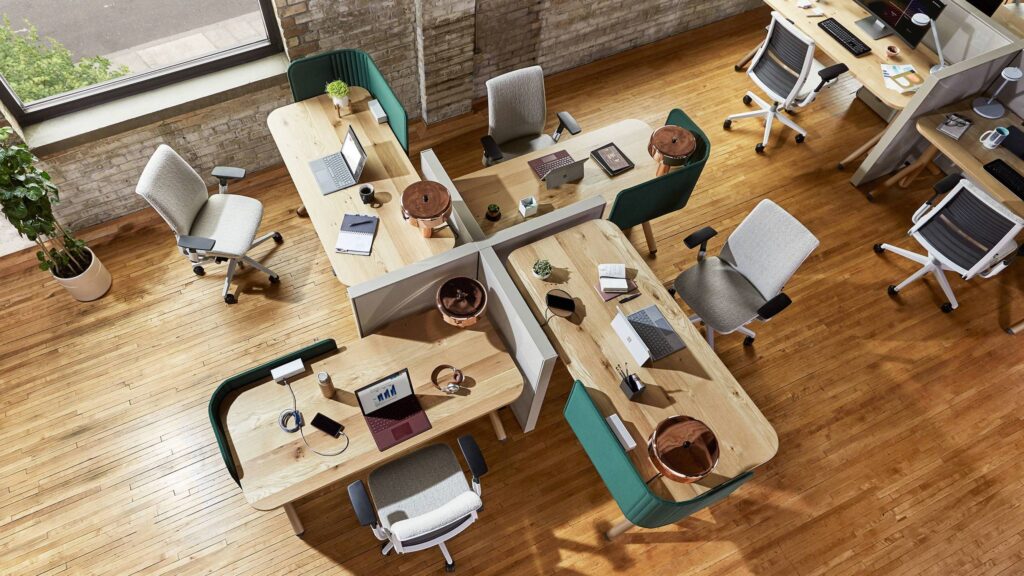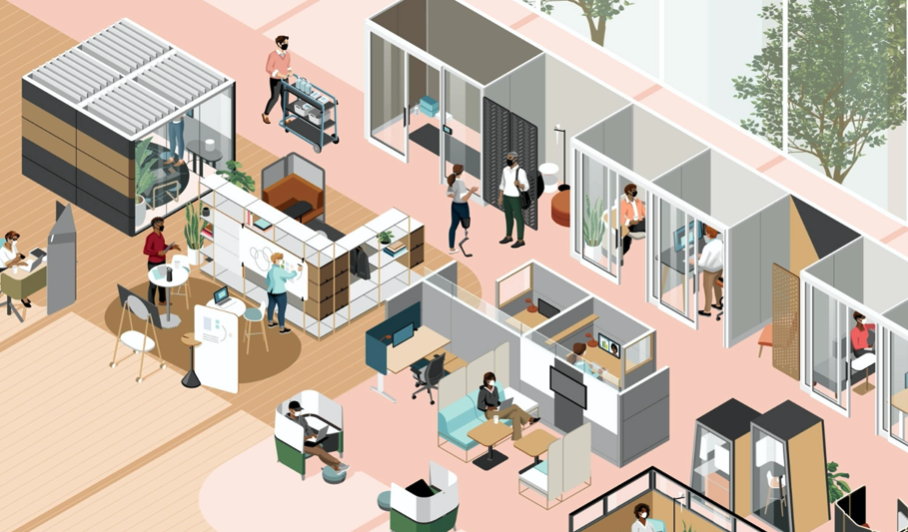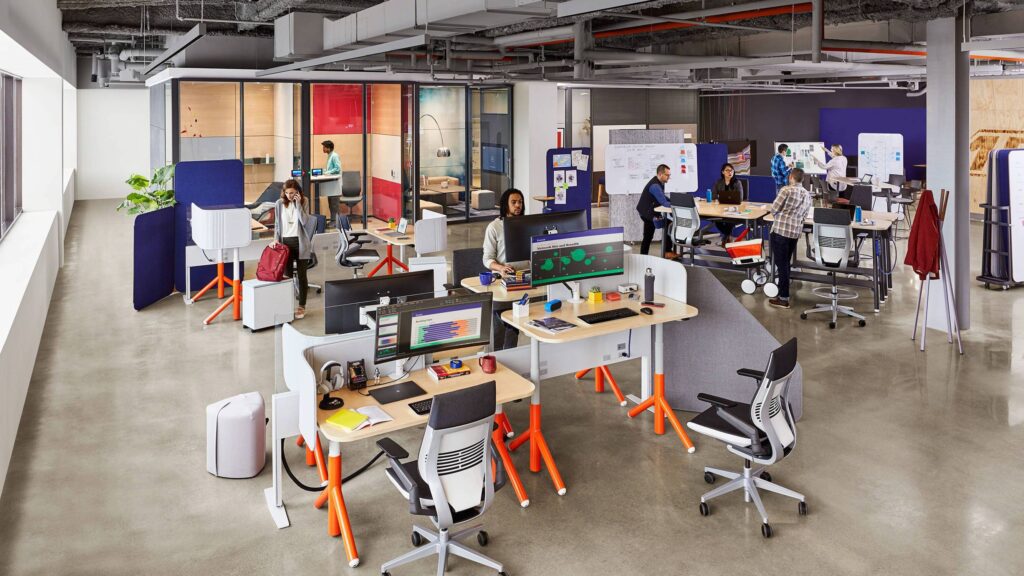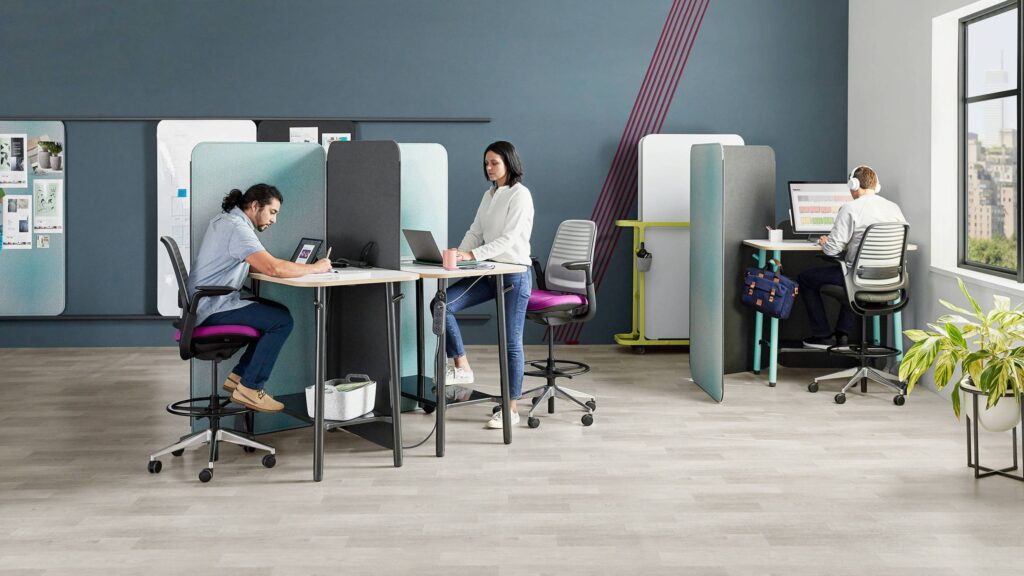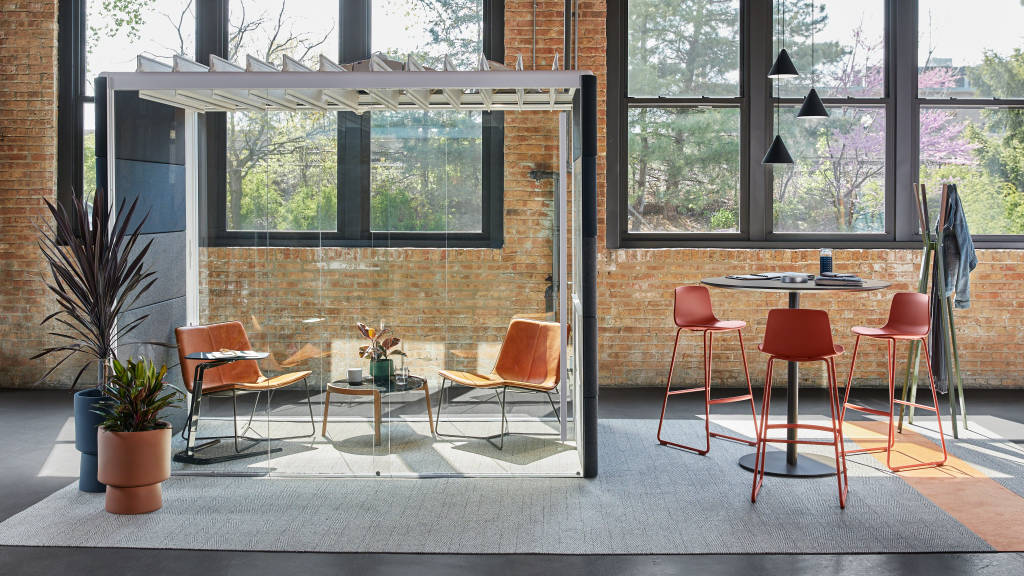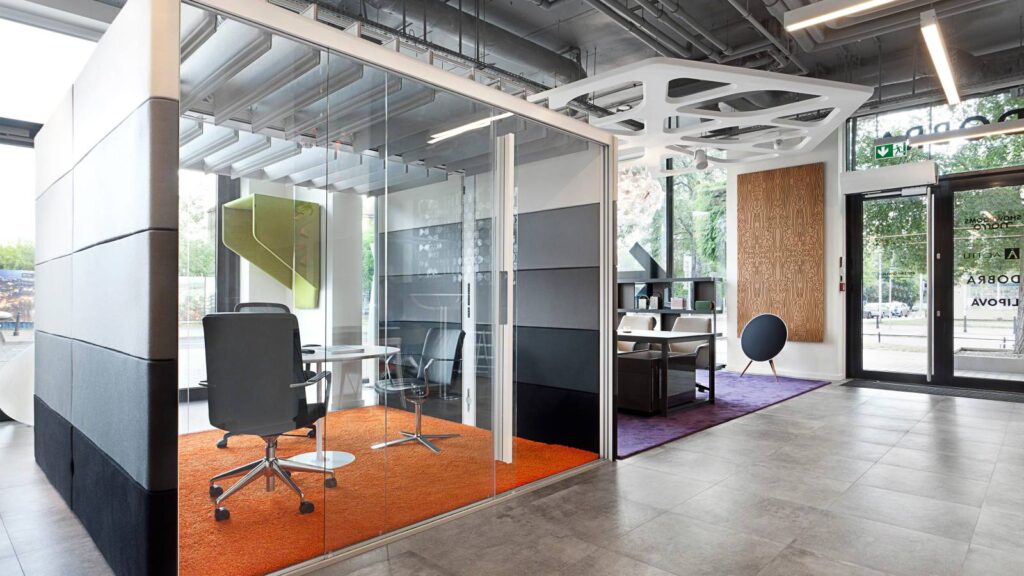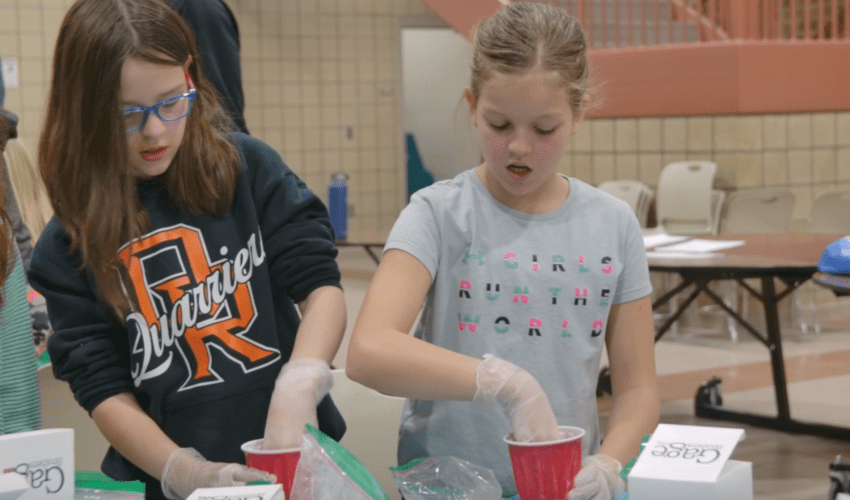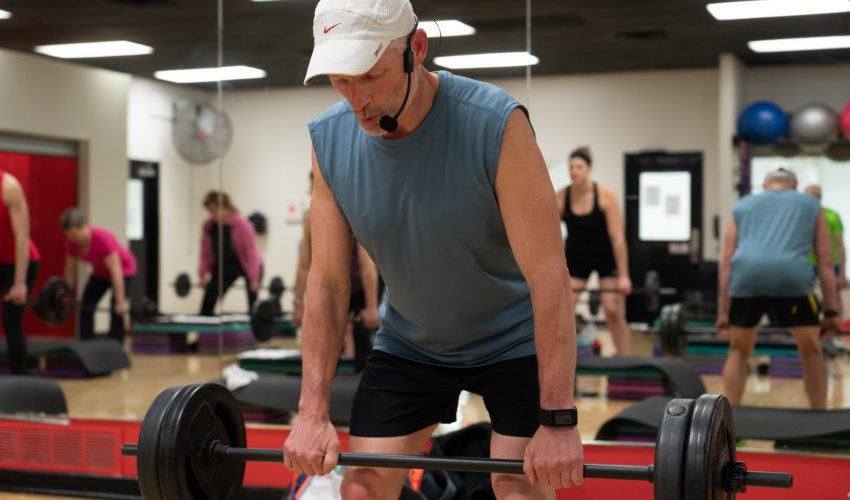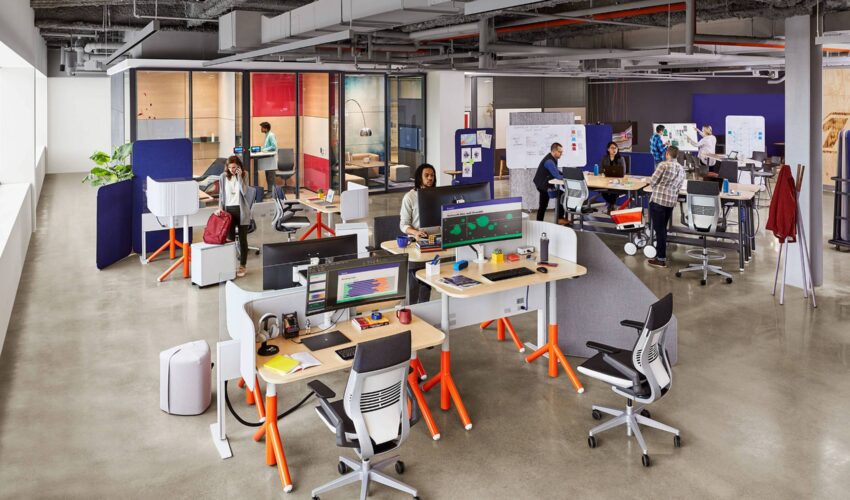How does a post-pandemic office work? With this approach, better
March 10, 2021
This paid piece is sponsored by Interstate Office Products.
Maybe your team is all back in the workplace.
Maybe some of the team is back.
Maybe nearly everyone is still working remotely.
No matter what your situation, though, the experience of work has changed in the past year.
There are new concerns about safety, adaptations needed for hybrid and virtual work, and employees arriving at the workplace with different expectations and emotions.
So the work environment has to change too.
“If you’re not doing anything, if you’re not even thinking about it, that’s the biggest issue,” said Kristi Christensen, vice president at Interstate Office Products.
“You know things have changed. They’re not going to go back to pre-COVID, so you need to figure out what that looks like for you.”
In most cases, this does not mean a complete office overhaul.
But in many cases, it means making some changes. And Interstate Office Products is uniquely positioned to guide you along the way. As a premier partner of Steelcase, Interstate is offering applications tailored to the changing work environment, with the research to support them.
“We anticipate many companies will evolve to some kind of hybrid work model,” CEO Gary Gaspar said.
“They’re figuring out what that looks like, but it’s likely few people will end up being fully remote. There will be more flexibility in the workplace, with room to work from home periodically.”
Want to learn more? Many companies do and have been reaching out to Interstate Office Products with questions as they consider recasting their work spaces. Gaspar and Christensen tackled some of the most common questions for us.
What are employees seeking as they return to the workplace?
Steelcase surveyed 32,000 people on this question over multiple studies and five keys themes emerged:
To be safe and feel safe
Offices generally have not been designed with the goal of mitigating disease, but that’s part of our reality now. So workers expect there will be standards in place just like they expect employers to mitigate fire or tripping hazards.
A deeper sense of belonging
Feeling isolated while working remotely is the biggest concern identified by people in every country surveyed. It connects to the top reasons people want to go back to the office: connecting with colleagues and reconnecting to the organization and your shared purpose.
To be productive
We’re increasingly learning that people are not as productive working remotely, reporting a 12 percent productivity drop and a 14 percent engagement drop.
Holistic comfort
Before the pandemic, 40 percent of people said they needed to change their posture frequently because of physical discomfort. While working remotely, they got used to sitting on sofas, at kitchen tables and even on beds. So now they need to have a quiet, distraction-free environment that also allows them to change settings, move throughout the day and work in a range of postures.
Greater control
People want options when it comes to where to work or how they can adapt their spaces based on the task they’re doing. Teams also need that flexibility to move things around to suit their work.
So how does a workplace adapt for all these additional needs?
It starts with design programming. We work with our clients to determine where they’re at and what they’re trying to accomplish. Even within the same business, departments might function differently, so we need to explore what that looks like based on the uniqueness of each organization.
And from there, we have the products. There are highly flexible products that have come into the market to allow these changes to happen more easily and less costly.
What do these kinds of products look like?
That’s the exciting part; there’s a lot of innovative design happening, and there are products to fit a huge range of needs and budgets.
For instance, the Steelcase Flex collection is designed to move you away from fixed, traditional furniture and toward pieces that can move easily and create more private space as needed.
People want more control over where and how they work, and this helps facilitate that with height-adjustable desks that easily roll, mobile tables, carts, acoustic boundaries, a number of screens and marker board solutions. Importantly, it all works on mobile power, so you’re not tethered to fixed spaces within the office.
What adjustments can you make to office space as it becomes apparent people maybe don’t need individual, dedicated desks if they’re going to be working more remotely?
We’re increasingly learning about the importance of social interaction in the workplace. We need that as humans, and it’s vital to an organization’s culture and by extension its overall health. So it’s important that no matter when someone is at work, that person feels like they belong and there’s a space for them.
We are working with clients to create “hoteling” or touchdown spaces within the office that work well for people who are hybrid workers. They can check into a space for the day, it will have all the technology they need, so all they do is plug into the network, and then they leave for the day and take their belongings with them. You also can consider assigned lockers to give hybrid or mobile workers a needed place to store personal belongings.
What kind of accommodations can you make for all the additional videoconferencing that’s occurring?
That’s absolutely something you should consider addressing and an area where we can offer solutions. Videoconferencing is here to stay, and it’s important to consider the environment that you’re creating for it. It’s one thing to do a quick informal video call from your desk with a colleague you know well. But what about a more formal meeting? Maybe with a key client or new prospect? What about if your video call is with a broader team or you’re collaborating with another organization? You need a highly professional, technically sound environment to do those videoconferences.
I’ve heard about work pods. Are they really being adopted in workplaces?
Absolutely. We have had one at Interstate Office Products for a while. It sits in the middle of our showroom and is a popular element of our office.
What we’re also anticipating is a movement toward more enclosed “me” and open “we” spaces. People who often did individual work in more dense, open spaces desire more enclosure or shielding to control privacy and safety.
Teams, who frequently worked in enclosed conference rooms, prefer to be in more open settings, both for a sense of safety and the flexibility to expand and contract and adjust their space easily based on their activities.
That means looking at ways to reinvent collaboration spaces that don’t always need four walls and a door, and individual spaces that feel more protected.
Work pods help create these kinds of spaces. They can range from the size of a small phone booth to a generous conference space, and they actually enhance the look and design of your workspace.
A newer product called an Air acoustic pod from Orangebox acts as a stand-alone room with its own power that runs the lights, the ventilation and provides supplemental power so you don’t need any internal architecture to do it.
You can even take a quiz to start finding the right pod for you.
Do we really need to invest significantly to adjust for COVID? What if I do this, the pandemic goes away, and I’m left having to change everything around again?
Pandemic or not, work environments continually need to evolve. The benefit to what we’ve discussed is that these changes contribute to a more employee-friendly workplace regardless of a pandemic.
It’s about creating changes that allow employees to work optimally, and most employers recognize the need for a better space for employees to come back to. Especially in Sioux Falls, with our unemployment rate dropping again, if you’re not thinking about this, you’re jeopardizing your ability to attract and retain talent.
People have an expectation now that they will work in a place where they feel supported and productive. If employers aren’t delivering that, workers will find a place to work that does.
Ready to prepare your workplace for 2021 and beyond? To learn more about how Interstate Office Products can meet your office needs in the Sioux Falls area and beyond, visit i-o-p.com or call 605-339-0300.

